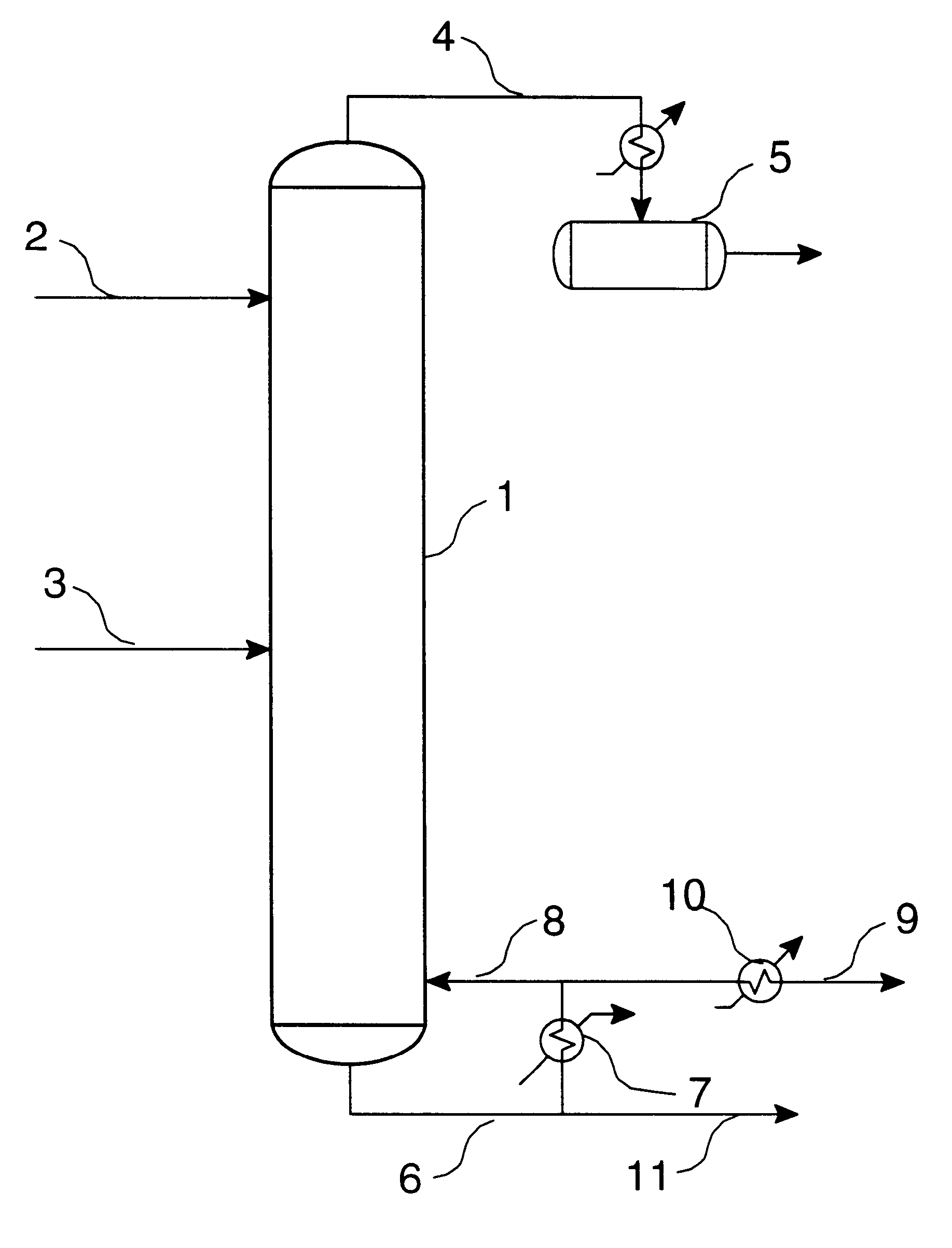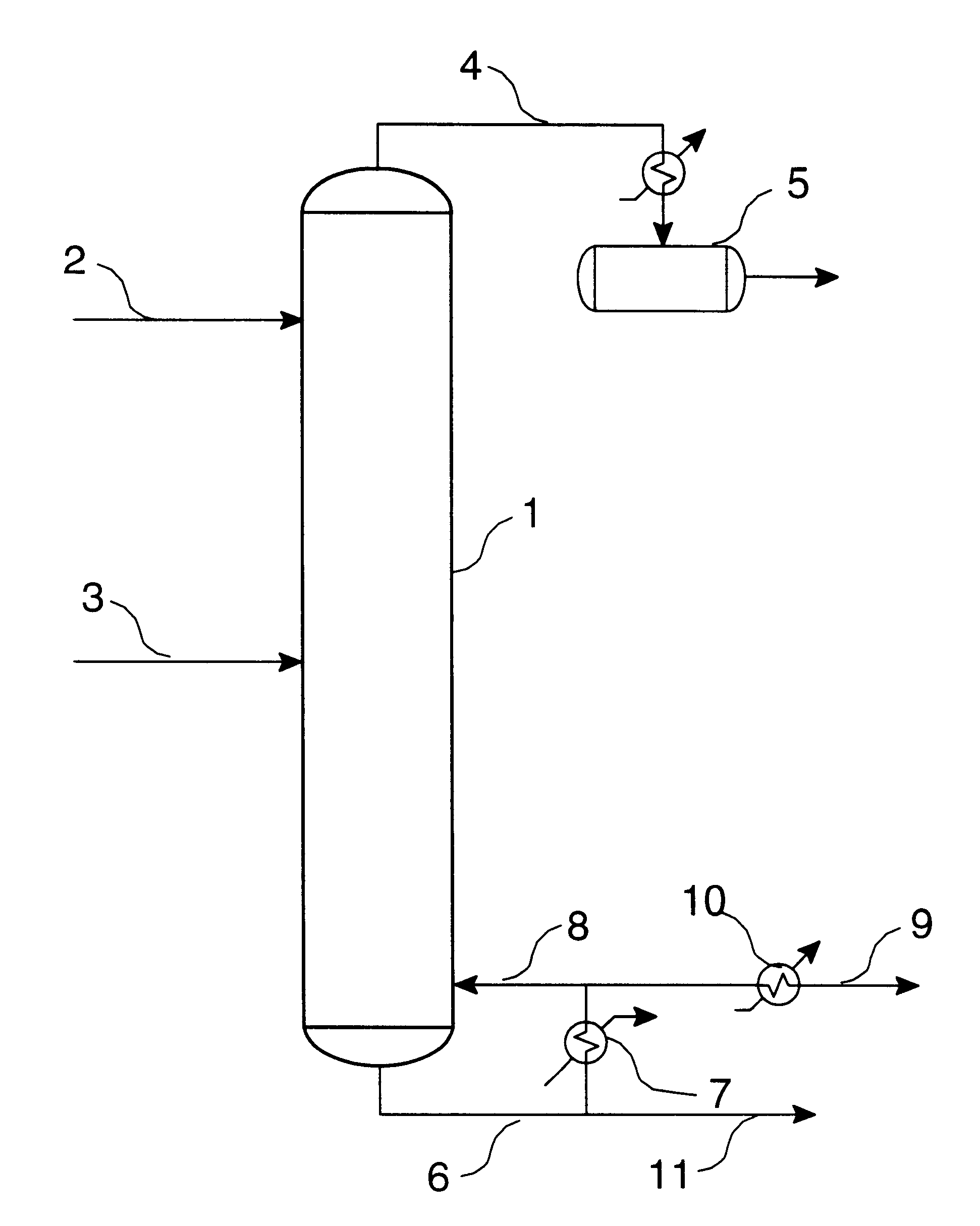Impurities separation by distillation
- Summary
- Abstract
- Description
- Claims
- Application Information
AI Technical Summary
Benefits of technology
Problems solved by technology
Method used
Image
Examples
example 2
Although 1,3 methyl propanediol (MPD) of high purity (99%) is readily produced, frequently even this high purity material has madedorus contaminants.
In accordance with the invention, a liquid stream of MPD (99%) containing malodorus contaminants together with 5 wt % water was preheated to about 122-129.degree. C. and fed at the rate of 150 cc / hr to the top of a 30 tray column. The column had 5 trays above the introduction point but these did not contribute to the distillation source as there was no column reflux.
Operation was analogous to that shown in the attached drawing except that both MPD and water were introduced via line 2, there was no feed via line 3.
Heat was provided by heating bottoms in reboiler 7 at 145.degree. C. and returning vapors to column via line 8.
The column overhead at 100 mm Hg and 34-40.degree. C. was removed at the rate of 5-15 cc / hr, condensed and passed to receiving vessel 5.
A product stream substantially free of malodorous contaminants was removed via lin...
PUM
 Login to View More
Login to View More Abstract
Description
Claims
Application Information
 Login to View More
Login to View More - R&D
- Intellectual Property
- Life Sciences
- Materials
- Tech Scout
- Unparalleled Data Quality
- Higher Quality Content
- 60% Fewer Hallucinations
Browse by: Latest US Patents, China's latest patents, Technical Efficacy Thesaurus, Application Domain, Technology Topic, Popular Technical Reports.
© 2025 PatSnap. All rights reserved.Legal|Privacy policy|Modern Slavery Act Transparency Statement|Sitemap|About US| Contact US: help@patsnap.com


